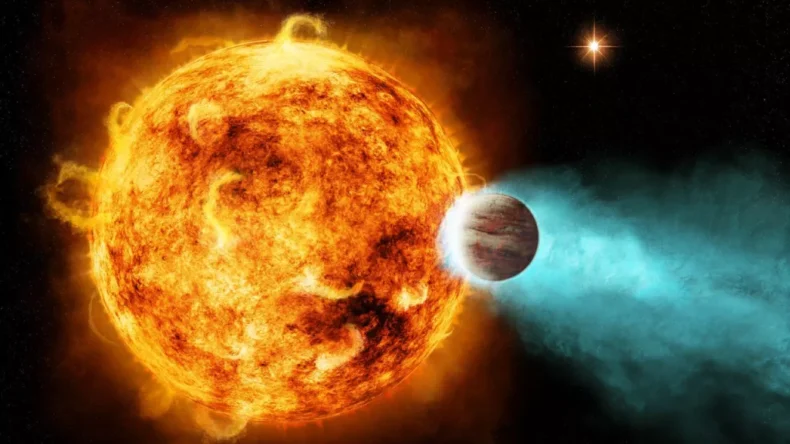The presence of “hot Jupiters” is one of the oldest mysteries of the exoplanet-hunting era. But a European probe is providing some insights into how these intriguing Jupiter-like planets develop.
Hot Jupiters are planets that have nearly the same mass as Jupiter and circle their stars extremely close, generally less than one-tenth the distance that Earth around the sun. Hot Jupiters are unlike anything else in the solar system, raising doubts regarding their creation.
Now, new data from the European Space Agency’s Gaia mission, which is following over a billion stars in the Milky Way, have shed new light on the genesis, development, and relative age of hot Jupiters.
The researchers utilized Gaia’s data of object locations and velocities to calculate the age of stars. Combining this information with data on hot Jupiters’ alignment to their stars’ spin indicated that hot Jupiters develop in a variety of ways, both rapid and slow.
“There was always missing information without this incredibly exact means of determining ages,” Jacob Hamer, a doctorate student in the Department of Physics and Astronomy at Johns Hopkins University and the main author of a new article explaining the discoveries, said in a release.
Hot Jupiters with mismatched orbits from their stars’ equators are believed to develop later than those with aligned orbits, such as the planets in our solar system.
“One [formation process] happens rapidly and creates aligned systems, whereas the other occurs slowly and produces misaligned systems,” Hamer said in the release.
The Astronomical Journal has approved the paper for publication. The arXiv website has a preprint version of the paper.
Read More – Bizarre spiral object found swirling around Milky Way’s center













